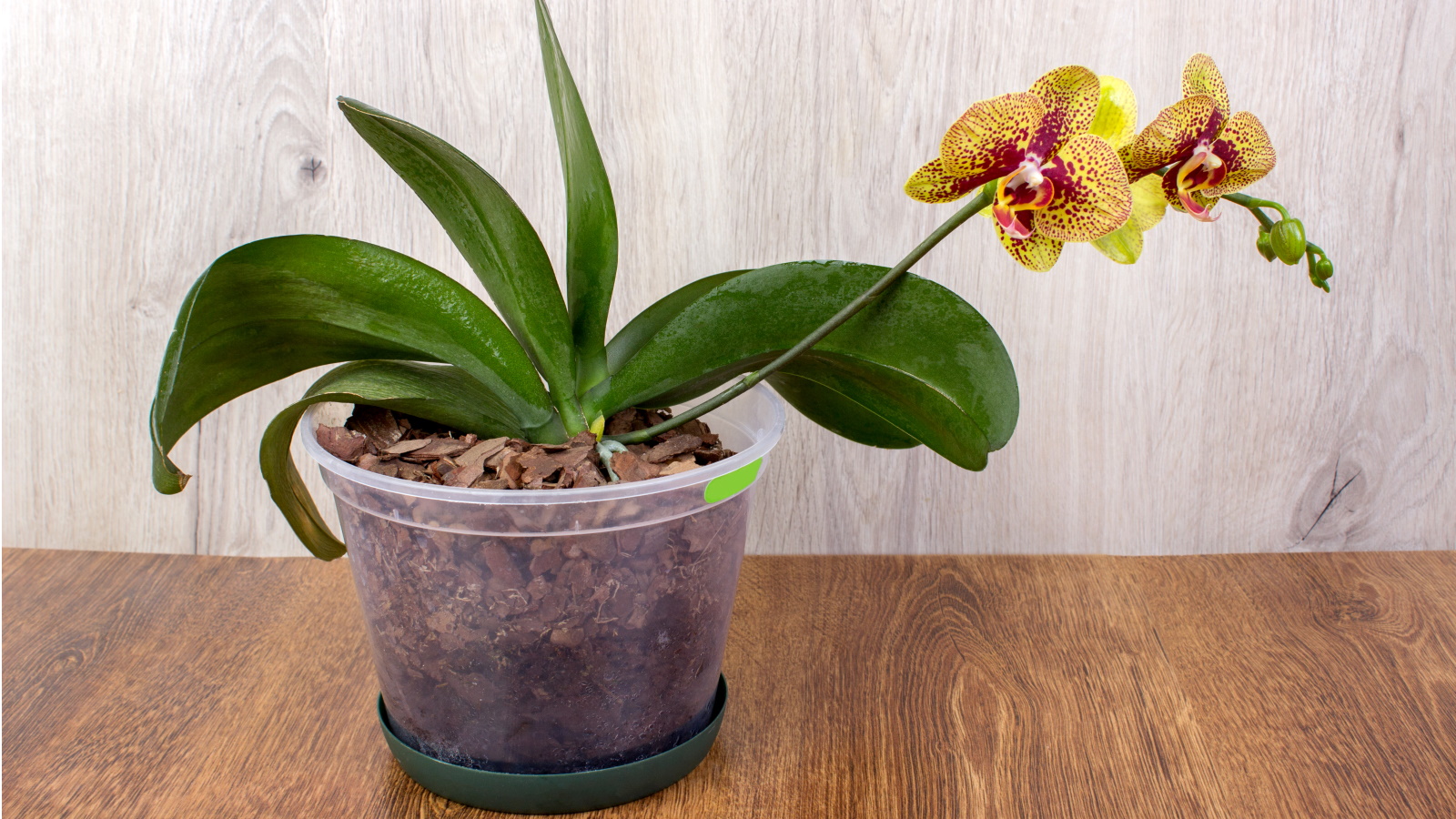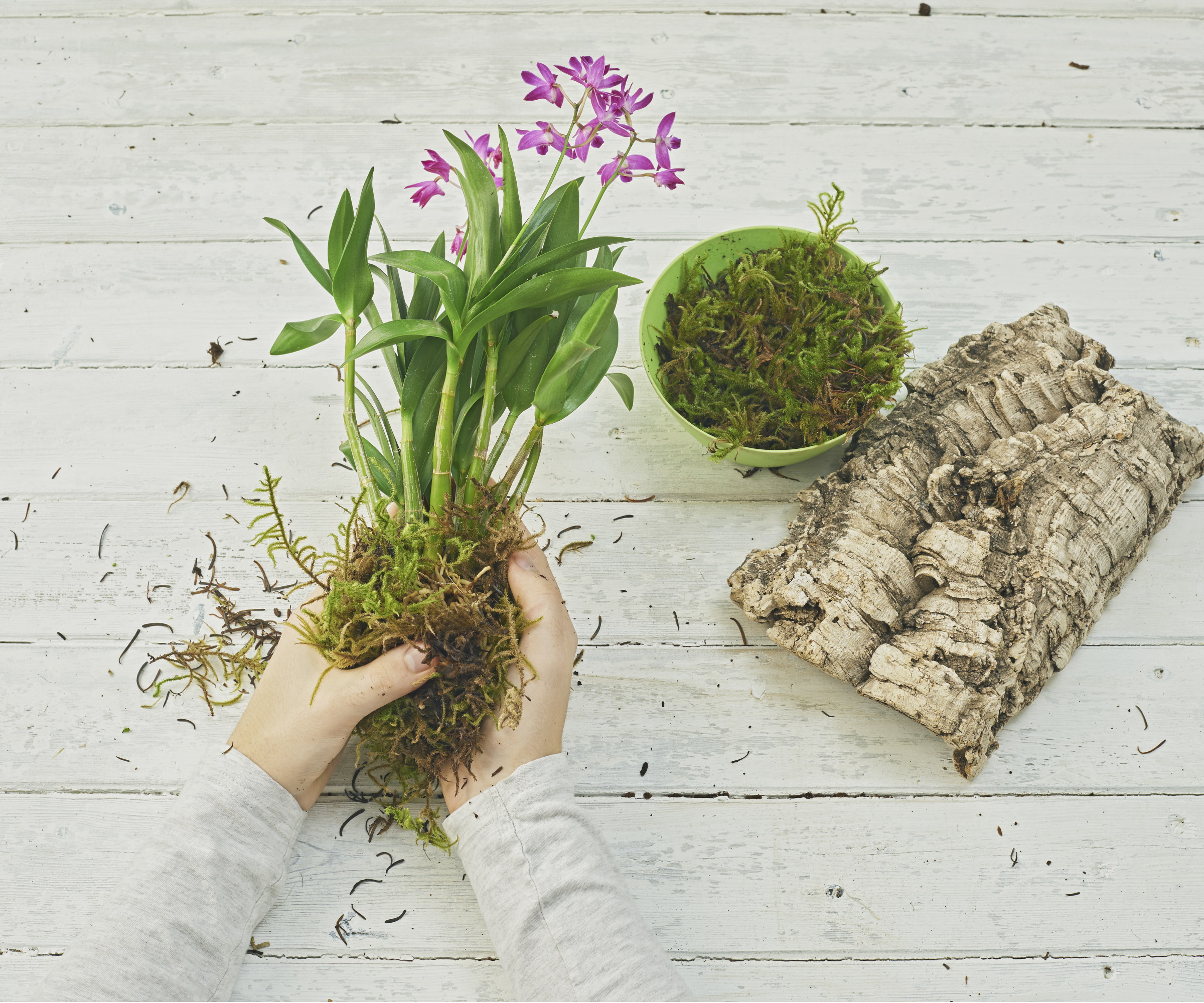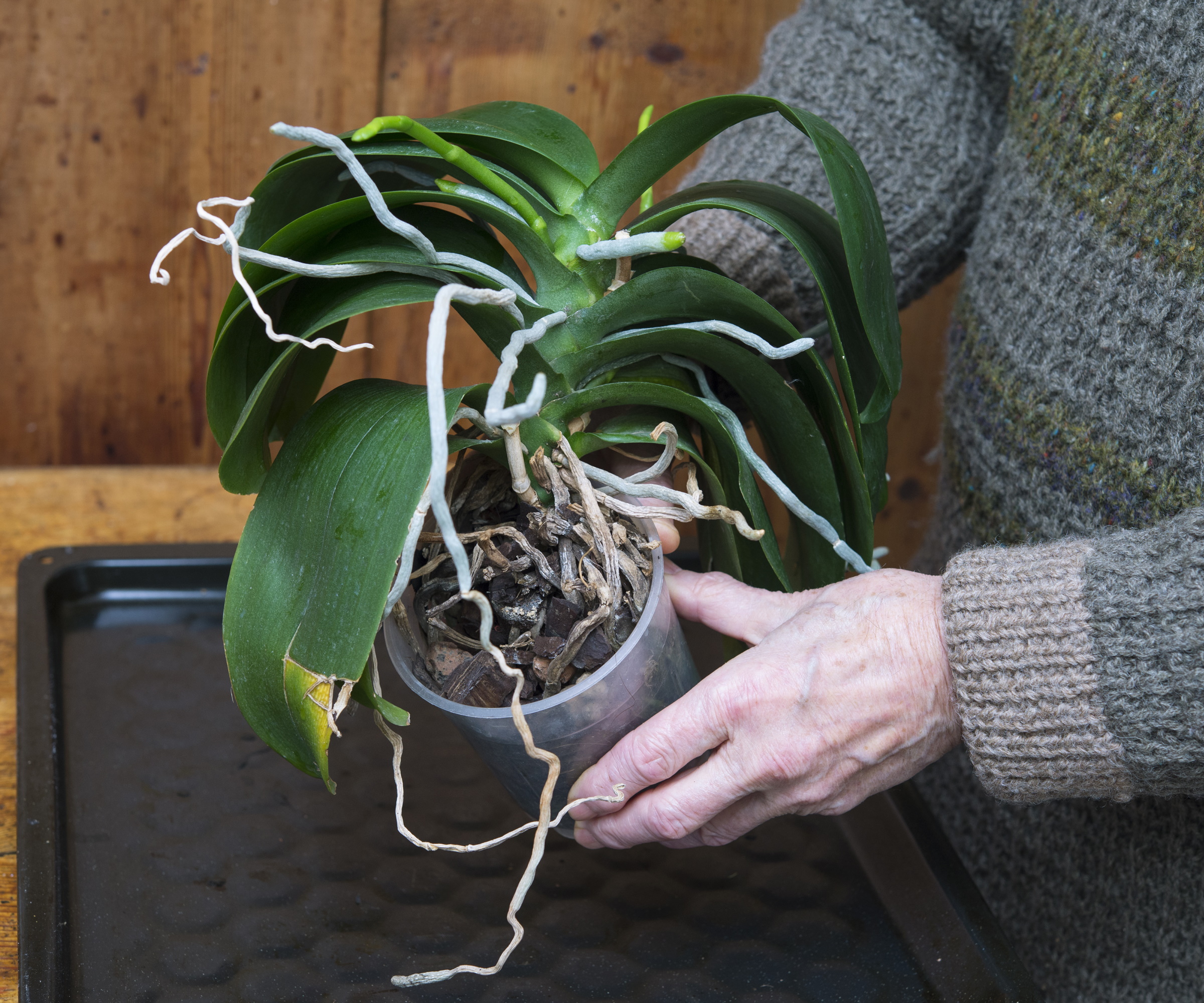
As a proud plant parent of a few different orchids, I can fairly say I've made mistakes providing these exotic beauties with the right care. It's no secret they can be tricky to keep alive - the smallest of errors can quickly lead to fading florals and lack of new growth.
Although orchid care isn't always straightforward, it is easy to get the potting mix right. As epiphytic plants that grow on the bark of trees in their natural habitat, orchids don't cope well with the potting soil your other indoor plants thrive in. The right potting mix for indoor plants reflects their native environment, so it's all about light materials for orchids, allowing their roots to access the air.
There are commercial mixes available, but here is how to make your own orchid potting mix, and be absolutely sure your orchid is getting plenty of beneficial nutrients.
What are the best ingredients for orchid potting mix?

There are lots of things you can put in indoor plant potting mix to amend it - including coffee grounds for plants, peat moss and even orange peels for plants. However, some ingredients will be better for orchids than others.
'It’s important to replace and try to replicate their natural growing conditions where they were found,' says Virginia Hayes, orchid expert at Westerlay Orchids. 'I recommend using orchid bark for proper structure and drainage. I would also include ingredients like certain mosses and perlite,' she adds.
The important thing to remember with orchid potting mix is it shouldn't be too dense. These plants have aerial roots, noticeable as green-gray roots growing in different directions, which require access to air for nutrients.
When making your own potting mix for orchids, avoid regular potting soil and substances like coffee grounds for orchids that will make a paste when wet. This can risk your orchid suffering orchid root rot, resulting in your orchid stem turning yellow, orchid flowers falling off and more.
Orchid potting mix recipe

Of course, there are a few different combinations you can put together if you want to make your own orchid potting mix. The recipe I've included here is a simple mixture that will tick all the boxes for the most common orchid houseplant - moth orchids, or phalaenopsis.
You will need:
- Orchid bark
- Perlite
- Sphagnum moss
- Peat moss or coconut coir
Firstly, use orchid bark (available at Perfect Plants Nursery) to make up 50% of your DIY potting mix. This is designed to provide plenty of drainage and has a good amount of essential nutrients for your orchid - nitrogen, phosphorus and potassium.
'When a plant’s potting becomes waterlogged, breaks or the plant is outgrowing its home, it’s time to repot. New potting bark with nutrients will encourage further growth,' says Virginia.
To provide even extra drainage, add 15% perlite. The coarse texture of perlite breaks up the potting mix, allowing your orchid to stay aerated. Not only this, it can also help provide insulation for your orchid's roots. 'Orchids do not like a change of temperature,' Virginia notes. Growing in too-cold conditions can cause your orchid to wilt.
Sphagnum moss is a popular ingredient to add into orchid potting mix because it holds onto both moisture and essential nutrients. This can then be slowly released to your orchid, boosting growth. You should use about 20% sphagnum moss in this mixture.
Finally, to ensure your orchid doesn't dry out too quickly, add 15% of either peat moss or coconut coir. To bring your sustainable gardening indoors, opt for coconut coir as a eco-friendly peat moss alternative. Like sphagnum moss, these ingredients hold onto moisture and release it gradually. This means you won't need to water your orchid as often.
Ensure the moss ingredients are finely chopped to prevent them blocking access to air. Once combined, you have an ideal moth orchid potting mix. 'Potting mix truly depends on the type of orchid and the amount in each pot. Adjust each portion after observing the orchid overall,' advises Virginia.
These coconut coir bricks are 100% organic. They have good absorption and work well in houseplant potting mix.
This 4L pack of horticultural perlite is a great soil amendment for indoor or outdoor container plants. It mixes well with other potting materials.
Sphagnum moss provides plants with sufficient moisture and access to oxygen. It's great for houseplants that need special care, like orchids.
FAQs
Should I fertilize my orchid?
Orchids can benefit from being fertilized. Fertilizing orchids provides them with a boost of nutrients, including nitrogen for leafy growth and phosphorus for flowers - aim for an orchid fertilizer with a higher first two plant fertilizer numbers, like this orchid food from Amazon. Make sure to follow manufacturer instructions and only fertilize your orchid when it's actively growing to avoid root rot and root burn.
Can you grow orchids in water?
Yes, it is possible to grow orchids in water. However, this does require close monitoring. Remove your orchid from its current container and take away any bark before submerging the roots in water and leaving it to soak for a couple of days. You can then take it out and let it dry while exposed to air. When the roots are silver rather than green, it's time to soak it again.
If it's time to repot your orchid, consider making a whole new potting mix from scratch. It's beneficial to add different ingredients with different nutrients, especially if you're trying to get an orchid to rebloom. Just make sure to repot aerial roots carefully so they don't snap and break.







